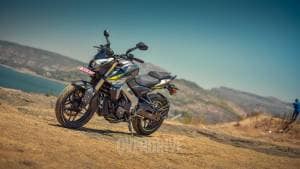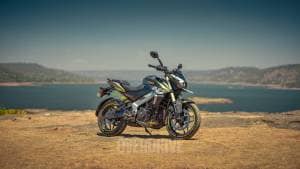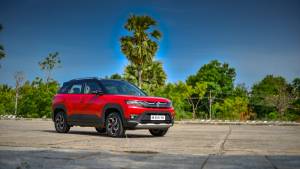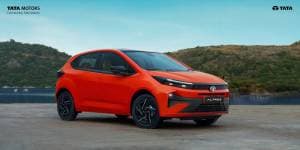Interview: Bajaj Auto's Eric Vas on Chetak, 2W OEMs entering EV business, setting up battery plant and EV market growth
We recently met Eric Vas, President Urbanite Business, Bajaj Auto Ltd to understand Bajaj Auto's approach to the electric vehicle business in India as it plans to launch the electric Chetak in 2020. Eric also mentions on Bajaj Auto's expectation from the tweaks in FAME policy, its plans on setting up a battery manufacturing plant as well as the trends that one can expect from the EV business in India.
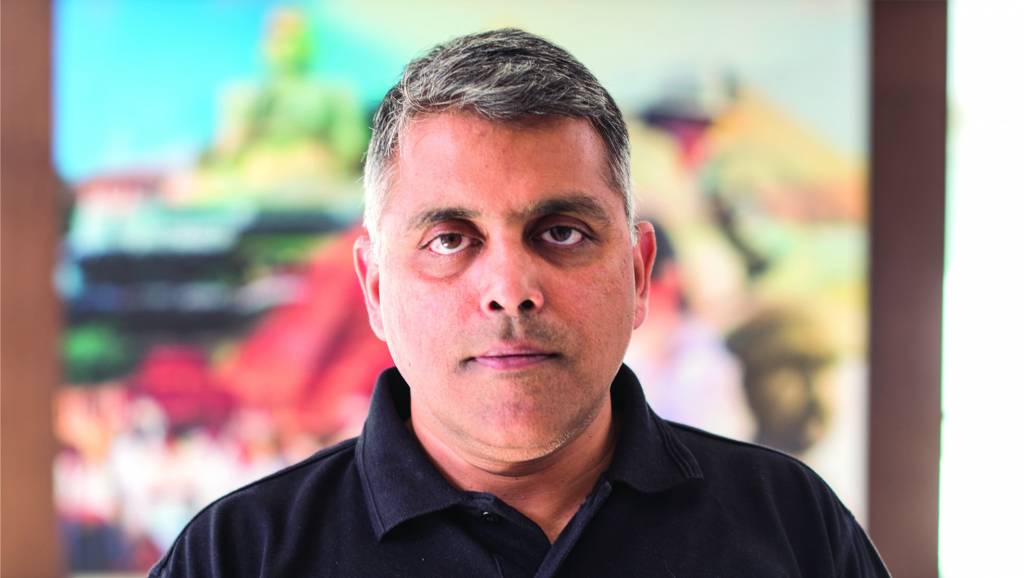
Q) The 2W EV space is currently dominated by startups and smaller brands. How does the entry of a mainstream manufacturer like Bajaj Auto impact things? It will certainly boost consumer and supplier confidence?
A: Hero Electric has been around for long, but yes they are not Hero MotoCorp. They have had some kind of time in the market. And there a whole host of startups. I think when we often look at an electric vehicle, we say startups rule the space. A vehicle comprises of two parts, one of the powertrain and other are the things on the vehicle like suspension, body, chassis, chassis dynamics, brakes, lights, ergonomics, handling, etc. I would say that a traditional OEM has a huge edge on that part because they understand how to set the suspension, dynamics and other bits, which a startup has a huge problem on. The domain knowledge doesn't exist with them. Of course, on electric powertrain, one would say there is not much to choose because today both are new to the electric powertrain business. Given this fact, a traditional OEM has a huge edge because 50 percent of the vehicle, not by value but work content is known. The electric part powertrain has a level of parity between a startup and a traditional OEM. Even there, the OEM has an edge because they know how to manage the network of suppliers better compared to a startup. The startup has an advantage of moving faster because they have less hangups and less institutional structures to deal with. I think it is good for the electric industry if traditional OEMs like Bajaj Auto and others are entering the market. It is also good for the customers as they will get superior products.
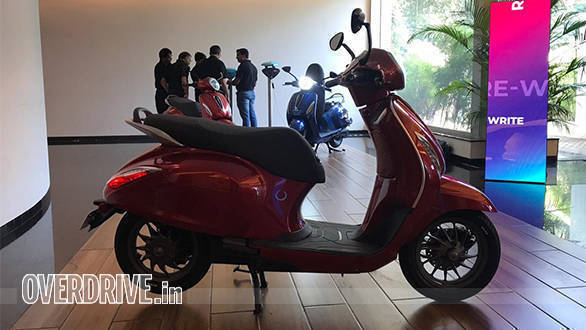 The scooter has adapted to modern styling cues, however, keeping the silhouette same.
The scooter has adapted to modern styling cues, however, keeping the silhouette same.
Q) According to you, where do EVs presently stand in the ongoing dry patch of the Indian auto industry? Will new technologies like these offer some respite?
A) I think to link EVs with the ongoing dry patch in the auto industry is a little unfair because if I look at the 2W market, the average volumes last year for internal combustion engines sold in India was 1.7 million per month, the average volume of electric 2W sold in India last year was 10,000 per month. You can't even compare both these industries at this point in time. I don't think what is happening in the average automobile sector is going to affect the electric vehicle industry. It is too different, too small to be driven by that cycle at this point in time. The way I look at it is that this industry can only grow, going forward. The reason being, there is a lot of noise and government focus on them, which is a good thing in the sense it raises awareness. The government subsidy is certainly welcome in terms of customer adoption that brings down the prices. The second reason is that the customers themselves realise that they need to be cleaner and greener than they were in the past. If you see people in the age of 35-40, there is a much greater sense of awareness in terms of cleanliness, green, pollution, taking care of the environment, than probable it was 25 years ago. And I think this is the way which will drive the adoption of electric vehicles. If you have good products sitting in the electric space, people will adopt it. If products are not good, people will look at it and say that I am not prepared to compromise on a product and shift to electric purely because it is green. If the products are good, people will not worry about marginal deltas of prices which will exist for sometime.

Q) Going forward, what are your expectations from the Government towards the 2W EV space in India?
A) That's a difficult one to answer, to be honest. I don't think whether it is right for us to have expectations from government. The Government does have the FAME 2 policy currently. I would expect them to tweak the FAME 2 policy based on the experience, both with FAME 1 and one year of FAME 2 which will happen by April 2020. The Government has always maintained that the FAME policy is for faster adoption of electric vehicles, which means they want to see electric vehicles grow as a percentage of automobiles sold in the country. The tweak can be in terms of the demand side of incentives, which is presently Rs 10,000 per kWh for the battery. It could also be tweaked on making the transactions easier for the customer as there are a list of papers that need to be submitted to avail the FAME incentive. I have also heard murmurs from the others in the EV industry, that this is a complex process. We (Bajaj Auto) am not saying that as we have not yet started selling. It is only when we start selling, we will realise how complex the process actually is. The tweak can also be in the form of modifying the phases manufacturing programme, which they have put into place. I assume such tweaks would make it more realistic to achieve the objective of building the electric vehicle ecosystem. that the government has in mind. If India wants to actually become a centre of electric vehicles, then this policy must lend itself for exports out of India, which currently I don't think the policy looks in a big way. I would assume that the Government would bring that factor in, now that OEs like Bajaj Auto and others are entering the EV space and would want to push exports.
Q) Given your legacy of making scooters and more importantly, the legacy of the Chetak, there is potentially a lot of footfall for this electric scooter to the Bajaj showrooms. But how does your sales team convince them to buy an EV over the conventional scooter?

A) We will be selling the all-electric Chetak from KTM and Husqvarna showrooms and not the Bajaj Auto motorcycle showrooms. We in the auto industry suffer from a lot of arrogance. We believe we convince the customer. However, it is the customer who decides what he/she wants to buy. I think the ability of a salesperson to tell a customer who has come to buy an IC engine vehicle to buy an electric vehicle is very limited. Similarly vice versa. The job of our communication as a company will be to tell the customer that here is a great electric vehicle. The job of the salesperson is to explain the product to the customer who wants to know more about the product. If he walks in, he is already convinced enough to spend that time to walk into the showroom and check out the vehicle. We have directly make that proposition to the customer as an OEM, and that's exactly what we will do.
Q) Will your future offerings in the EV space be sold through the same channel?
A) Chetak is a brand that will be sold through the KTM-Husqvarna showrooms. Subsequently, we may have other electric vehicles which are branded with Bajaj that may be sold through Bajaj motorcycles showrooms. Because if indeed electric vehicles are going to become big in the future, as we believe it will, then gradually you will have to have the same across all segments. And therefore you have to have them at multiple showrooms. I do not see a future where you say this is an electric showroom where you will get an electric two- and three-wheeler. The electric 3W when it comes will be sold through the 3W dealership network. I am skeptical of having a single showroom for all our electric offerings, which is not a wrong way. Tomorrow, KTM will also bring an electric product and if Chetak becomes big enough and is self supporting, it can have its own line of showrooms.
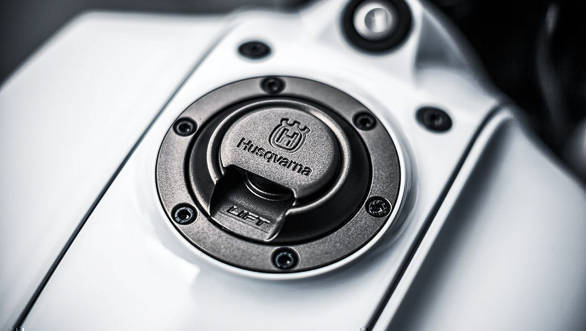
Q) What is the cost of ownership like for EVs for buyers? How different is it from IC engine vehicles and what are the intervals of maintenance?
A) The actual big difference is in terms of energy costs. Just to give you a flavour of that, 3 units of power will get you say 100km in an electric vehicle. For the same distance in an IC engine scooter, you might have to consume 2.5 litre of petrol which is approximately Rs 180. In Maharashtra, it is Rs 8 per unit which makes it Rs 24 for 100km. This is the big delta. The second big delta sits in maintenance. In case of an EV, there is no oil change or filter change. All you are adjusting are the brakes and the suspension settings because you are travelling on the same road, so it is going to be rattled around the same way. All you have to do is tighten some contacts and put some petroleum jelly. The service interval is close to 15,000km in an EV compared to 5,000-10,000km for an IC engine, depending on its type. EVs have significantly lower maintenance costs. Against that you have a higher initial price because the batteries are expensive. My understanding is that the breakeven starts happening in 2.5-3 years, depending on different assumptions such as petrol and electricity pricing. Today there might not be a secondary market for batteries, tomorrow there will be. The definition of a battery is that it retains of upto 75 % of its initial charge capability, that is the life of the battery. Our battery will give a life of 70,000km, even when you pull it out after that, there will be 75% charge left that can be used in home charging applications. For example, if you have solar panels, you can put these batteries there as stable powerwalls. Over a period of time, the secondary market for these batteries will develop.
Q) Is Bajaj Auto looking at setting up a battery manufacturing plant?
A) Certainly on an assembly side, yes. Maybe not directly but through vendors. We have vendors who are doing battery assembly for us, which is an important part of localization. But I think once these develop, electric vehicles will have superior residual values to an internal combustion vehicle. So if IC engine vehicles depreciate by 25 per cent each year, my sense is the EVs will depreciate a lot less once these secondary factors develop. This is not going to happen overnight. It will take 2-3 years but you will its impact kick in. In places like the US, this is already happening. Companies like Tesla take back your battery and put it in a powerwall.
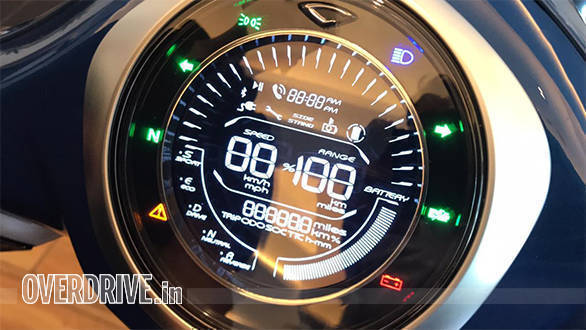 The instrument cluster integrates range, speed, time, battery charge and ride mode indicators.
The instrument cluster integrates range, speed, time, battery charge and ride mode indicators.
Q) Why choose a Li-ion battery over a competitive valve-regulated lead-acid battery?
A) VRLA batteries don't have a great life, in terms of charge cycles. Secondly, they don't hold charge as well and they deteriorate much faster. Third reason is that the Government of India's FAME 2 policy clearly specifies advanced chemistry battery which precludes lead acid batteries. What you don't want is a product for which you are always running to change things. This gives the product a poor reputation. That's why we have chosen a set of chemistry around the batteries which will give us a life of 70,000km over a 1,000 charge cycles. For a period of up to 7 years, you don't have to bother about it (battery). Typically, a 2W rides does a total mileage of 10,000km on a scooter. There is also a weight issue. Advanced chemistry batteries like Lithium-ion which is used in NMC (nickel manganese cobalt oxide) or NCA kind of technologies have higher charge densities and tend to be lighter compared to a lead-acid battery.
Q) How did you decide the balance between range, endurance, charging times etc?
A) There are trade offs that you have to make. We started with looking at range as the fundamental. We targeted specifically a 90Km+ range. And then you work backwards on costs and try to optimize the battery for that as batteries are horribly expensive. And that is how we came down to fixed battery configuration with a particular setup for cooling it. There are choices that OE makes. Over a period of time, these choices will get better with time as we learn more about how customers respond in real life conditions. If you look at statistics, average daily riding distance for a scooter in India is around 30km, which can go up 35km in cities like Bangalore. Then you take the 90 percentile utilization that has a cut off at around 57-60km which means 97 per cent of Indian popular do not ride for more than 67-70km in a day. Then you put in a factor of safety that nobody wants to be at Zero charge when he/she comes back. The rider would also want a little extra and that is why we came with a range of 90km+. There is a lot of math behind that figure and our vehicle will deliver 95km in Eco mode and 85km in Sport mode.
Q) Is the removable battery trend sustainable? What are its pitfalls?
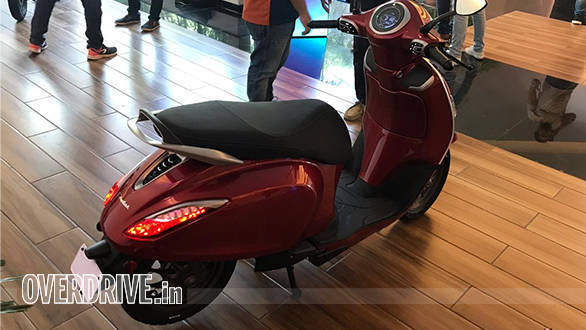 The panels get no aggressive styling elements, instead, sport a smooth bulge on either side of the engine cover that flows to the back of the scooter integrating the tail lamp.
The panels get no aggressive styling elements, instead, sport a smooth bulge on either side of the engine cover that flows to the back of the scooter integrating the tail lamp.
A) For personal applications, we don't think it is feasible because it actually results in significantly higher costs because you need more batteries in the system. When you are swapping, you need to have one battery charged up and kept ready. In other words, when you are duplicating the most expensive part of the vehicle, you are putting extra resources. We don't think that is required for personal mobility. On the other hand, for commercial applications, it might be a very good technology for something like three-wheelers. Because it substitutes quick charging. The reason we want to stay away from quick charging is because it reduces the life of the battery significantly. For that it is probably a good idea. And there because he needs more range. Putting that kind of range would mean a large expensive battery, which will not be feasible and leads to excessive charging times. The commercial operates cannot afford the down time on his vehicle, so swapping battery is his solution. He is prepared to pay for the downtime because for him every minute is a revenue lost if he is not operating. For personal use, the battery can be put to charge at night. Swappable batteries works in some places where higher costs make sense because you are earning that revenue.
